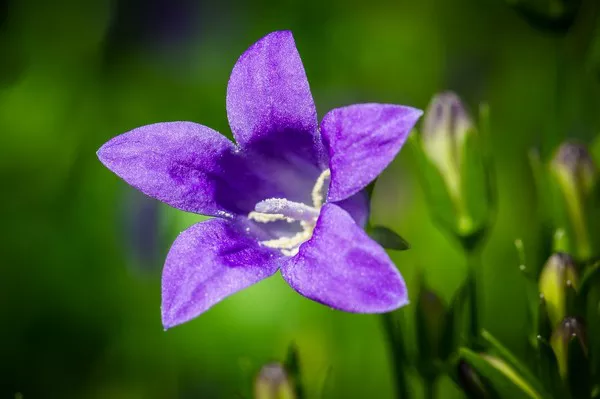Dill (Anethum graveolens) is a widely recognized herb cherished for its distinctive flavor and culinary versatility. While its feathery leaves and flavorful seeds have long captured the attention of cooks and gardeners, the flowering stage of dill often remains an overlooked aspect of its growth cycle. In this article, we delve into the captivating appearance of dill when it flowers, along with its significance, cultivation considerations, and its role beyond the plate.
Dill’s Floral Display: A Visual Delight
The transition from dill’s vegetative phase to its flowering stage is marked by a remarkable transformation in its appearance. Initially characterized by its finely divided, delicate leaves, dill undergoes a remarkable metamorphosis as it prepares to flower. The flowering stems rise above the foliage, bearing clusters of blossoms that add a touch of ethereal beauty to the herb.
1. Flower Clusters: Dill’s flowers are arranged in umbels, which are umbrella-like clusters. These clusters consist of numerous individual flowers, each with a distinct and charming appearance. The flowers exhibit a vibrant yellow hue, creating a visually striking contrast against the herb’s green foliage.
2. Petals and Sepals: Dill flowers consist of five petals that come together to form a small, star-like shape. These petals are complemented by equally distinctive sepals, which protect the developing flower bud before it blooms. The combination of petals and sepals enhances the overall allure of the dill flower.
3. Floral Aroma: Beyond its appearance, dill flowers also emit a subtle yet delightful fragrance that adds another sensory dimension to the plant. This aroma is a testament to the plant’s aromatic compounds, which contribute not only to its fragrance but also to its culinary and medicinal applications.
The Significance of Dill Flowers
While dill leaves and seeds have traditionally taken center stage in culinary pursuits, dill flowers hold their own special significance and offer unique benefits.
1. Culinary Application: Dill flowers are an edible component of the plant, carrying a flavor profile similar to that of the leaves and seeds but with nuanced differences. The flowers offer a milder and slightly sweeter taste, making them a delightful addition to salads, dressings, and garnishes. The visual appeal of the blossoms also elevates the aesthetic quality of dishes.
2. Culinary Garnish: Dill flowers are often used as an exquisite garnish due to their vibrant color and delicate appearance. Their presence can transform a simple dish into a visually appealing masterpiece, capturing the attention of diners and stimulating their appetite.
3. Seed Production: The transition to the flowering stage is a prelude to the formation of dill seeds, which are highly prized for their culinary and medicinal applications. Allowing some of the flower clusters to mature into seed heads enables gardeners to harvest these seeds for future use, thereby ensuring a steady supply of this versatile ingredient.
Cultivating Dill for its Blossoms
Cultivating dill with the intention of enjoying its blossoms involves a few considerations to ensure a successful and rewarding experience.
1. Soil and Sunlight: Dill thrives in well-drained, moderately fertile soil with a slightly acidic to neutral pH. Adequate sunlight is essential for its growth, with around 6-8 hours of direct sunlight being ideal. Planting dill in an area that receives ample sunlight helps promote healthy foliage and robust flowering.
2. Sowing and Germination: Dill can be grown from seeds directly sown into the garden soil after the last frost date. The seeds should be sown about 1/4 inch deep and spaced approximately 12 inches apart. Germination typically occurs within 7-14 days, depending on environmental conditions.
3. Thinning: Once the seedlings emerge, thinning them to a distance of 12-18 inches ensures proper air circulation and prevents overcrowding. This practice also encourages robust growth and flower production.
4. Watering: Dill plants require consistent moisture to flourish. Water the plants regularly, aiming to keep the soil consistently moist but not waterlogged. Mulching around the plants helps retain soil moisture and suppresses weed growth.
5. Harvesting Flowers: Dill flowers can be harvested when they are fully open but before they begin to set seeds. Gently snip the flower clusters with clean shears, leaving a short stem attached. Harvesting in the morning, after the dew has evaporated but before the heat of the day, helps preserve the flowers’ flavor and aroma.
Beyond the Plate: Dill Flowers in Other Domains
The appeal of dill flowers extends beyond the realm of culinary applications, finding relevance in various other areas.
1. Medicinal Use: Dill has a rich history of medicinal use, with its flowers also contributing to its healing potential. The essential oils present in dill flowers have been associated with digestive benefits, aiding in alleviating indigestion and bloating. Dill flower infusions can be prepared and consumed as herbal teas for their potential health benefits.
2. Aromatic Crafts: Dill flowers’ gentle aroma lends themselves to crafting endeavors. Dried dill flowers can be incorporated into potpourri, sachets, and homemade scented candles, infusing living spaces with a natural and soothing fragrance.
3. Wildlife Attraction: The bright yellow hue of dill flowers attracts pollinators such as bees, butterflies, and beneficial insects to the garden. By cultivating dill and allowing it to flower, gardeners contribute to supporting local ecosystems and promoting biodiversity.
Conclusion
Dill’s transition to the flowering stage is a captivating process that adds a new layer of beauty and intrigue to this versatile herb. The delicate yellow flowers not only enhance the aesthetic appeal of the plant but also hold culinary, medicinal, and ecological significance. By understanding the appearance of dill when it flowers and its broader implications, we can gain a deeper appreciation for this remarkable herb that has enriched kitchens, gardens, and well-being for generations. Whether adorning a plate, offering therapeutic benefits, or fostering biodiversity, dill flowers stand as a testament to the marvels of the natural world.


